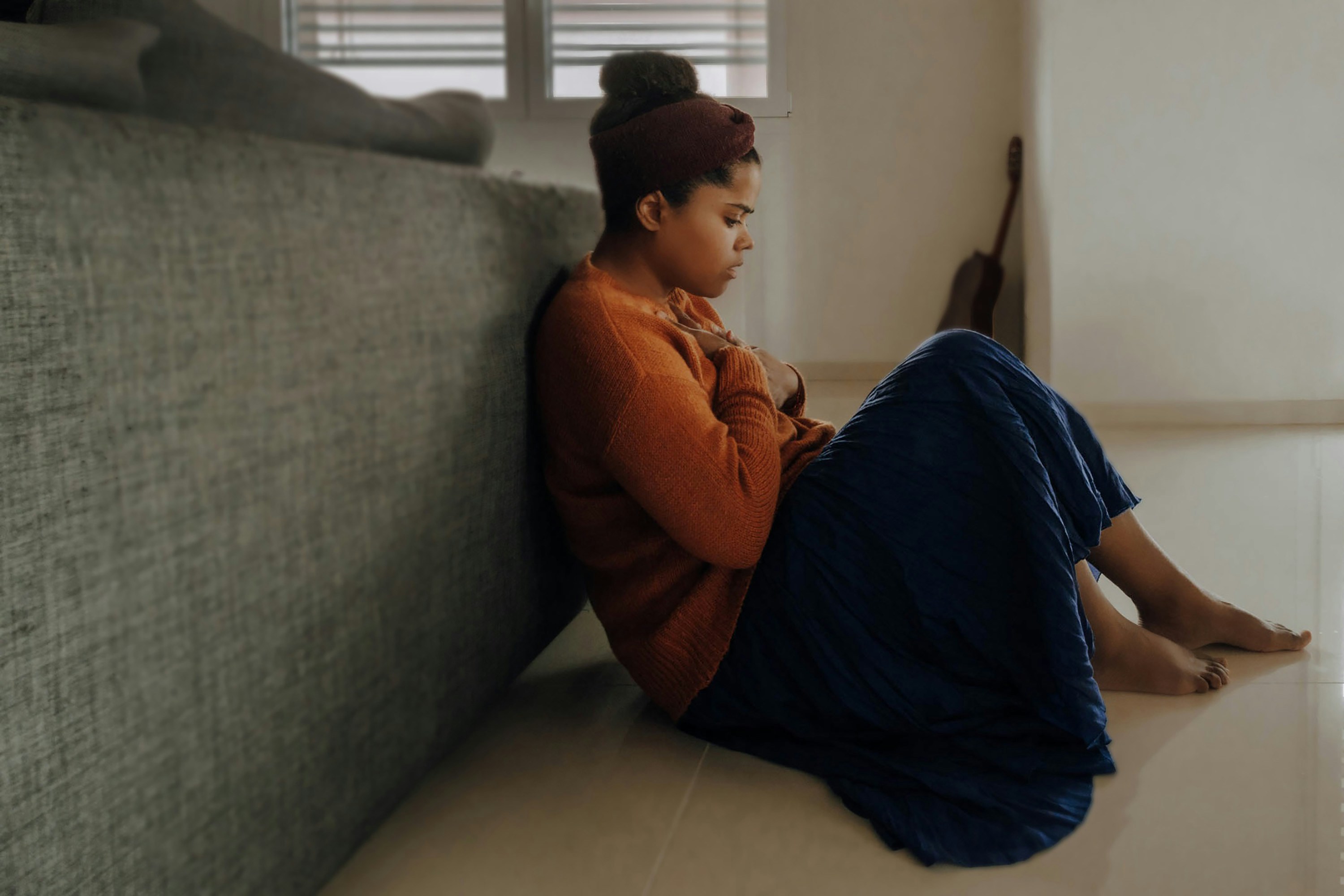5 Ways to Shift Your Anxiety Without Moving a Muscle

Anxiety is an emotion that may quickly become debilitating, sending you into fight, flight, or freeze mode. As a psychotherapist of 20 years, I teach my clients the importance of finding the pause to transform their experience of anxiety.
One of the most remarkable things scientists have discovered about the brain is that whether you are actually doing something or imaging yourself doing something, the effect is still the same. This is beneficial because if you can remove the barrier of having to do something, it may be easier to find the pause.
As an art therapist, I’ve seen how creativity can side-step the overpowered, anxious mind. Flexing your creativity reminds you of who you are separate from your anxiety. This is important because differentiation is a crucial criteria for feeling empowered. You are not your thoughts.
Your innate creativity is a superpower because it gets you connected to your senses, a necessary step for regulating your nervous system. Being creative engages your more playful, flexible, and spiritual nature. This sends signals to your brain that you’re ok even if things are hard right now.
Here are 5 creative ways to shift your anxiety without moving a muscle.
1. Breathe in your favorite color. It’s no secret that when you are anxious you’re not breathing deeply enough to settle your nervous system. When you use your imagination to breathe in your favorite color, your breathing practice becomes more focused. You’re using your brain in an intentional way.
The color you select will likely represent something meaningful to you. Being curious about the meaning can enhance your practice. Follow your creative instinct if the color you breathe out wants to be different from what you breathe in.
2. Take yourself to your safe place. Your safe place is somewhere, real or imaginary, in which you feel fully relaxed. This place represents where you restore yourself in body, mind, and spirit.
It’s helpful to identify your safe place before an anxiety attack. Once you know where it is, use your journal to write down details about your safe place. What can you see, feel, hear, taste, and smell? These details are important.
When you start to feel anxious, use your imagination to take yourself to your safe place. Use the sensory details to enhance your ability to be there mentally.
3. Create a soothing playlist and sing an affirmation to yourself. Research has shown that music can reduce cortisol, a stress hormone. Music increases serotonin levels, which helps to regulate your mood and improve positive thinking.
Create or find a playlist that helps you to feel more calm, connected, and empowered. When you feel worried, turn on the music and see how your energy shifts. Listen until you feel better.
Affirmations are powerful because they help you change your thinking. When you sing it, it helps you feel safe, like the effect that lullabies have on babies. You may even wish to sing your affirmation to the tune of a lullaby.
4. Bust out your favorite dance moves, in your mind's eye. Movement of any kind helps you get back inside your body. Imagining yourself dancing is equally as powerful. It will transport you away from the distress of the moment, which can help you ride the waves of uncertainty with more ease.
In your mind’s eye, begin by creating choreography that affirms how you are feeling first. This is a practice of accepting your feelings. Then, evolve your dance until your movements represent a state of calm. Stay with the process until you feel more relaxed.
5. Use your mind's eye to paint what you are experiencing and seeing. This mental practice is about creating space for all of your thoughts and feelings without judgment. It’s the first step to take before looking for solutions, because feelings are like teenagers, they need to believe that they’ve been seen and heard before you can figure out what to do.
Start by noticing what’s happening inside yourself. Create a painting that translates your feelings onto canvas. When you become absorbed by the details, it actually helps you to slow down the effect that the anxiety is having.
Once your imaginary painting feels complete, create a new one that helps you feel better. You may be surprised by the solutions that pop into your consciousness as you do. This is why creativity can be such an important ally, it can guide you towards the answers you need.
May these techniques help you find the pause you need to shift your anxiety without moving a muscle. Solutions that come from a centered and grounded space usually serve you better.
Stephanie McLeod-Estevez, LCPC, is an art therapist and a breast cancer survivor. Her unwavering passion lies in empowering women to embrace life boldly, through connecting to their innate creativity and resiliency. To learn more about her coaching services and story, visit www.stephaniemcleodestevez.com. Subscribe to her free newsletter, "Spark Curiosity, Live Radiantly," for complimentary Art Therapy Guidebooks and exclusive access to enriching workshops.









